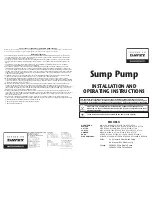
3
4
ENG
pRack PR300T +0300018EN rel. 1.5 - 02.05.2017
With P+I control, added to the eff ect of the proportional action described
above is the integral action, used to achieve a null control error in steady
operation, as shown in the fi gure:
Regu
l
ation
variab
l
e
P+
I
P
Setpoint
time
Fig. 6.i
The integral action depends on the time and the deviation from the set
point. This modifi es the request if the control value does not approach
the set point for some time.
The integral time setting represents how fast integral control is
implemented:
• low values determine fast and intense control action
• high values determine slower and more stable control action
It is recommended to not set a value that is too low for the integral time,
to avoid instability.
Note:
the set point is in the centre of the activation band, therefore
when reaching the set point some devices are on, even with purely
proportional control.
6.3.2 Neutral
zone
The operating principle is schematised in the following fi gure:
Regu
l
ation
re
q
uest
For
c
e
off
De
c
rease
zone
In
c
rease
zone
Neutra
l
zone
1
00
%
Diff.
Diff.
Setpoint
Regu
l
ation
probe
va
l
ue
Fig. 6.j
Inside the neutral zone the capacity request sent by the controller is
constant (except when there is a modulation device and modulation is
enabled inside the neutral zone, as described in the following paragraph)
and the value satisfi es the temperature control request in those specifi c
operating conditions, therefore within this zone no device is stopped or
started.
In the decrease zone, the request also decreases at a rate that depends on
the deviation from the set point, and vice-versa in the increase zone the
request increases proportionally to the deviation.
For the increase and decrease zones, the following can be used:
•
Fixed times: the request decreases or increases constantly as time
elapses.
•
Variable times: the request decreases or increases more quickly
(according to the settings) as the deviation from the set point increases.
Note
: The previous fi gure shows the increase and decrease with
fi xed times.
For control in Neutral zone, the parameters shown in the fi gure must be
set:
N
Z
timings
Setpoint
Regu
l
ation
probe
va
l
ue
De
c
rease
zone
In
c
rease
zone
Neutra
l
zone
Diff.
De
c
r.
Diff.
In
c
r.
Diff.
Diff.
Min
time
0
%
Max
time
0
%
Max
time
1
00
%
Min
time
1
00
%
Fig. 6.k
As well as the decrease and increase diff erentials, 4 times need to be set,
two for each zone, which represent the maximum and minimum time
to reach the request, equal to 0% or 100%, for the decrease and increase
respectively.
Tutorial
: the decrease/increase times (minimum and maximum)
represent the time needed to change from maximum to minimum
capacity and vice-versa, and not the time between the deactivation/
activation of the individual device. For example, in the case of 4 devices
with the same capacity, an increase time of 180 s means that one device
is activated every 45 s.
In the situation shown in the fi gure, the request sent by the controller
decreases/increases slowly as soon as the controlled value is outside of
the Neutral zone, while it decreases/increases quickly the further the
controlled value moves away from the Neutral zone; in this way the
response of the system is faster when further from steady conditions.
Note
: When using fi xed times, the maximum and minimum must
be set to the same value. In this case, the request sent by the
controller decreases/increases constantly inside the deactivation/
activation diff erential.
6.3.3
Modulation in Neutral zone
pRack PR300T can activate a specifi c function inside the Neutral zone if
modulating devices are used (e.g.: inverters). This function can be enabled
in main menu branch C.a.g/C.b.g or D.a.g/D.b.g.
Modulation in Neutral zone is used to vary the request sent by the
controller inside the Neutral zone proportionally so as to enter the
decrease zone with the minimum request and the increase zone with the
maximum request, meaning a device can be immediately deactivated/
activated when exiting the Neutral zone.
This makes it possible to remain longer inside the neutral zone without
starting or stopping any device.
An example of this operation is shown in the fi gure:
Regu
l
ation
re
q
uest
Regu
l
ation
probe
va
l
ue
P
1
1
00
%
Neutra
l
zone
Fig. 6.l
Page 83 of 172
Copyright HPL March 2021
P4114S Rev 03
Содержание Hubbard GCU2040PXB1
Страница 4: ...Page 4 of 172 Copyright HPL March 2021 P4114S Rev 03...
Страница 44: ...4 Wiring Schematics Model GCU2040PXB1 Part Number D4155S Page 44 of 172 Copyright HPL March 2021 P4114S Rev 03...
Страница 49: ...6 Carel PR300T CO2 Controller manual Page 49 of 172 Copyright HPL March 2021 P4114S Rev 03...
Страница 144: ...Page 144 of 172 Copyright HPL March 2021 P4114S Rev 03...
Страница 161: ...8 PRESSURE ENTHALPY DIAGRAM FOR R744 REFRIGERANT Page 161 of 172 Copyright HPL March 2021 P4114S Rev 03...
Страница 165: ...9 Commissioning Form Page 165 of 172 Copyright HPL March 2021 P4114S Rev 03...
















































